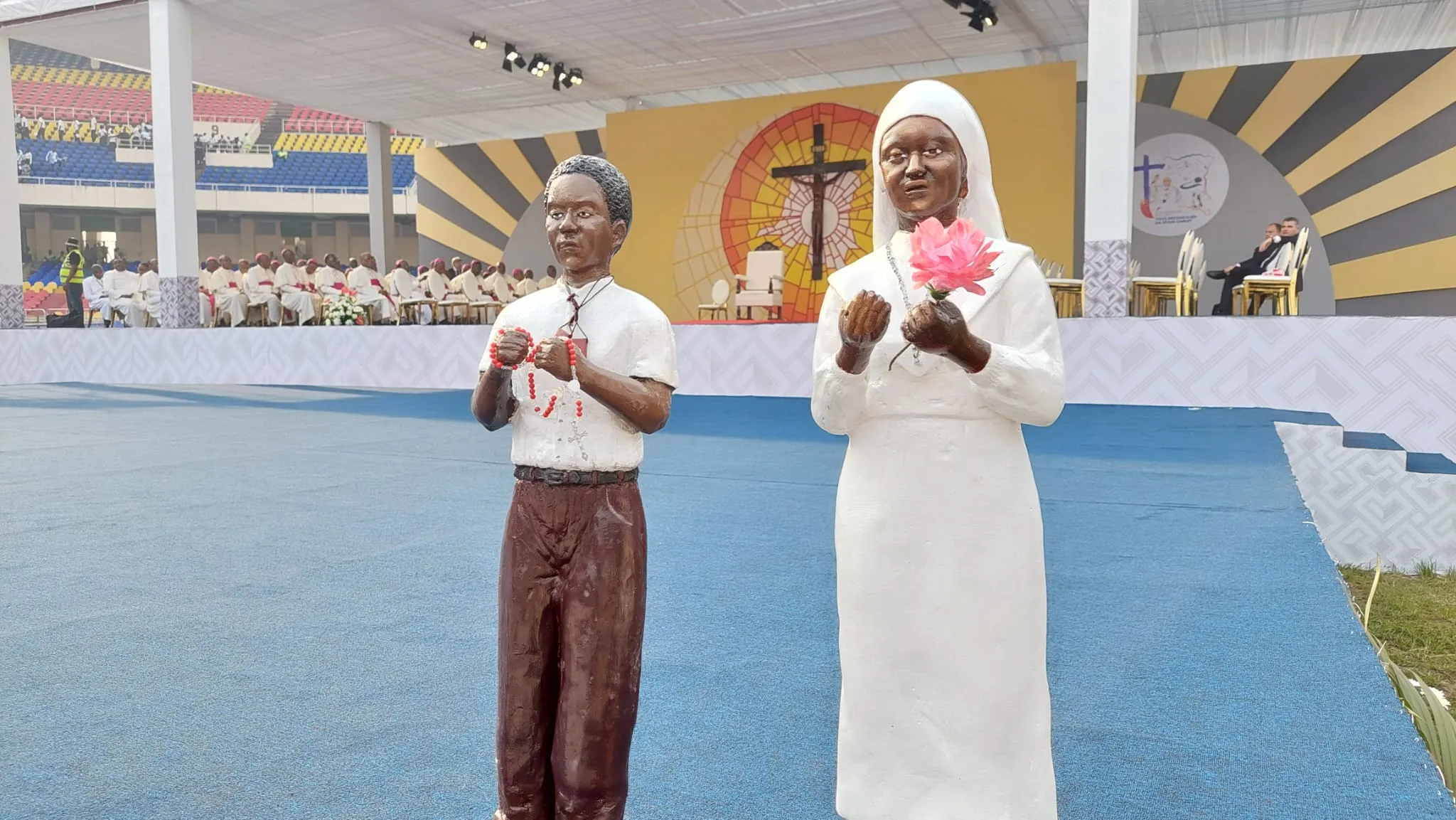
At the end of October 2016, Pope Francis traveled to Lund, Sweden. He was there to commemorate the beginning of a momentous anniversary: five hundred years since Martin Luther’s posting of his “95 Theses” on October 31, 1517 and therefore the commonly-recognized beginning of the Protestant Reformation.
The Reformation and narratives
Historians dispute whether or not the iconic event—the Augustinian priest literally nailing the document on the Wittenburg church door on that date—actually occurred. Whatever the case, the date stuck, and half a millennium later, we can look forward to an anniversary year of conversations about Luther and the revolution he set in motion. The usefulness of these conversations, like any dialogue, will be directly proportional to their honesty and how accurately rooted they are in history, rather than in ideology, wishful thinking, or contemporary agendas.
There are innumerable possible tangents in this conversation, countless angles to explore. What did Luther actually say and teach? Was his take on faith, grace, and St. Paul well-informed? What were the ecclesiastical, political, economic, and social roots of the events that tore Europe apart in the 16th century? And what was the impact?
The Protestant Reformation, like many historical events, is largely and unfortunately apprehended by most of us via narratives. Given the great breadth and depth of the past, and the challenges in understanding it, this is how most of us have been taught history since we were children. It is true in political history, and it is true with religious history as well: the culture, society, nation, or church has a stake in the history it is conveying and will shape the narrative to support its own interest. Is objectivity absolutely impossible?
No, but it is certainly true that we in the present are well-advised to listen to historical narratives with a critical eye, always asking, Who is telling this story? And, What is their interest in the shape of the narrative? And, What are they including? What are they leaving out?
So it is with narratives about the Protestant Reformation. For most of the past half-millennium, the dominant narrative of these events most of us have heard has assumed their prophetic inevitability and positive value. Even some late 20th-century Catholics have absorbed this narrative: the prophetic Luther who was inspired to correct the Catholic Church’s flaws, and to whose views the Catholic Church finally came around to accept anyway with the Second Vatican Council, and whose movement wrought nothing but progress for human beings, their faith, and their societies.
As is the case with any field of study, however, history goes through its own periods of revolt, reform, and retrenchment. Over the past few decades, Reformation Studies have seen the old Protestant-shaped narrative collapse, assumptions shaken off, and important questions raised about every aspect of this movement.
An instructive example of this reevaluation of history is found in relation to women and the Reformation.
The Reformation and “freedom”
For much of the past 500 years, to the extent that anyone bothered to think or talk about women and the Reformation, the assumption was that since the Reformation improved everyone’s lives, then women’s lives were made far better as well. Luther and other Reformers had profound, deep, and violence-inducing differences, but since they all seemed to prioritize the “freedom of the Christian” in opposition to the rules-and-works mentality of the prison of medieval Catholicism, that must mean that everyone was better off (because they were more “free”) after 1517—and “everyone” includes women, does it not? No longer forced into convents against their will, no longer told that marriage was an inferior state, and now encouraged to read the Bible in their own languages, the lot of the post-Reformation woman must have been an improvement over what her grandmothers had suffered.
The first problem we run up against in this scenario is the Reformers’ definition of “Christian freedom” and our contemporary understanding of their understanding. Whether their understanding was an accurate, truly biblically-based one is a matter for theologians. Whether their sense of it was anything even close to what we think “freedom” is, even interior freedom, is doubtful: ask Anabaptist Felix Manz, executed by drowning for his beliefs by order of the Reform-controlled Zurich council in 1527, barely a decade after the movement began and just a few years after Luther published his On the Freedom of the Christian.
Setting that aside, we can turn to the question of women’s actual lives. The impact of the Protestant Reformation on women was profound. In some senses nothing changed: nothing Luther or the other reformers said questioned basic, traditional, medieval Catholic assumptions about human anthropology or the roles of men and women in marriage. What did change was something else, but something quite simple, and with profound implications: Luther and the other Reformers went to war against the evangelical counsels as ideals, and especially as the core of a vowed way of life. This type of life and spirituality was no longer an ideal; marriage and domesticity—might we call it the domestic church?—was.
The Reformation was, of course, a diverse and constantly evolving phenomenon. Common to the entire movement, however, was this conviction that vowed, celibate religious life as an ideal was non-scriptural, unnatural, harmful, led to sin and hypocrisy, and must be eliminated, supplanted by another model of ideal Christian life: the individual, saved by faith alone, dwelling productively in the community as believer, spouse, and parent.
The strongest symbol of this non-biblical ideal of virginity was of course, the monastery, so in Reformed lands the closing of male and female religious houses was a top priority, and the Gospel of domesticity was preached and enforced in their stead. Every woman, it was assumed, was meant for marriage, children, and homemaking. Gone was that space—as the convent was—for women to pursue intellectual and artistic pursuits, to provide institutionalized charity, to interact with religious, political, and business interests as leaders of their communities, and—very importantly—to support the community and serve the living and the dead through their once highly valued, now “useless” prayers.
And so, a survey of the large and continually growing body of research reveals wide agreement that is, in fact, 180 degrees away from the former view of the Reformation’s impact on women as beneficial. “The down side of the peculiarly Protestant ‘good news’ to women,” Lutheran historian Kirsi Stjerna notes, “was the exclusiveness of marriage as the basis for the holy vocation. No other options received a theological blessing. Thus, Reformation theology, generally speaking, enforced the domestication of women. … The domestication of women to the honorable callings of motherhood and marriage, advocated through theological argument, knitted with the Protestants’ valorization of family and marriage as the cornerstones of society, on the one hand, and their reiteration of the Pauline rejection of women teachers and ministers, on the other.”
In other words, what we are left with in Reformation-dominated lands is a vision of a holy society in which worship is centered on preaching from a literally-interpreted Bible, from which female saints have disappeared, and in which women might no longer envision or live out their spiritual lives in ways unrelated to earthly marriage and family life. They must be connected to a human male in a legal, familial way in order to have social legitimacy, human worth, and a role in the spiritual landscape.
As Sjerna writes, “With the fading of the nuns and other related, traditionally important religious roles for women (such as the mystics and visionaries), which coincided with the theologically argued women’s domestication, women’s spiritual presence and theological voice in the church at large seemed to radically diminish.”
Does this sound like 20th-century feminism speaking to you? Perhaps it does, and perhaps there is a reason. Perhaps the enforced destruction of Catholic life in Protestant lands produced societies which viewed women as essentially wives and mothers instead of individual souls capable of radical imitation of Christ on the journey to be saints, and inadvertently produced a counter-reaction or even correction centuries later.
The closing of the convents
On a very concrete level, the Reformation impacted the lives of real women by driving them from their homes, taking them away from their sisters, and depriving them of their livelihood, as convents and monasteries were closed across Europe.
The closures occurred in different ways, depending on the form of government involved, for of course these closures were civic actions. In England, ruled by a unified monarchy, the evisceration of religious life was a top-down decision and absolute. When the monasteries were dissolved, both women and men were impacted, but the impact on women was more damaging. As historian Amy Leonard writes, post-dissolution pensions were distributed based on the wealth of the house and the rank of the religious, and since houses of religious women tended to be poorer, their pensions were less. “Only 6 percent of the former male religious received pensions of 2 £ or less (essentially living in poverty), while 60 percent of the women did.”
On the Continent, the closing of convents, while still a priority for the Bible-oriented reformers, was handled in various ways, simply because civic organization was more disparate. In the Holy Roman Empire, the nuts-and-bolts of the Reformation was handled in different manners at different levels of civic organization. Some communities were more tolerant than others, even allowing the women of a convent to continue to dwell in community—as long as they did not practice the Catholic faith or wear habits. Many female religious houses in Reformed lands, for example, were turned into schools.
When a convent closed, what happened? The younger women—“freed” from the convents into which they had been “forced”—were now turned over to men as their wives, sometimes willingly, other times not. The older women were absorbed back into their families. What was lost was a way of life in which women could organize their own lives, lead, create art and music, conduct business, learn, write and read, provide charity and spiritual support for the community and each other.
Resistance
The question of religious women and the Reformation is not a minor one. Exploring the stories of these women reveals much about the course of the Reformation that reaches far more deeply than do our easy narratives.
The fact is that many women resisted the Reformers and did so with tremendous intelligence, deep faith, and profound courage, not to mention sharp and biting wit. Their stories offer deep insight into what the Reformation was about and what was at stake.
Of course, most did not resist and were reabsorbed into ordinary life. Others moved, either individually or as entire communities, into Catholic-friendly areas. But the stories of outright resistance can be found all over Europe. One of the more striking is the story of the Poor Clares of Geneva, whose story we know because one of their number, Sister Jeanne de Jussie, wrote it all down.
Jeanne de Jussie was born in 1503, and as a young woman joined the Poor Clares, who had established a convent in Geneva in the late 15th century. By the 1520s, Reformed ideas had entered Switzerland, and those ideas meshed with political rivalries to produce a heated, violent era.
Although we associate Geneva with John Calvin, the events that impacted the Poor Clares occurred before his arrival. The Reform sympathizers who started preaching in Geneva in the late 1520s had come from Bern. They were determined to unite Geneva in the “true religion,” most of the citizens of Geneva were initially equally determined to resist, and what followed were years of high tension, competitive preaching, some bloodshed, continual iconoclastic vandalism, and intense efforts to drive the Poor Clares from their convents to where their nature dictated they truly belonged: into the arms of husbands.
Jeanne de Jussie wrote what we now call A Short Chronicle, which tells the story of those years. She describes the broad political landscape and rivalries as well as the course of this stage of the Reformation in Geneva and finally, in fascinating detail, the impact of these events on her own sisters: the continual harassment and threats, the pressure placed on them to leave, the destruction of their convent, and the male and female Reformed preachers who would bombard them with the “Gospel.”
Reading A Short Chronicle will open the eyes of anyone under the impression of the Reformation as a movement that coursed along powered only by the finer spiritual sensibilities. If Geneva came under the power of the Reformation at this moment, it did so less because of “seekers” finding a spiritual home, but because the citizens were threatened and bullied, a destructive battle was fought, and the Catholics lost.
They destroyed the churches:
And in all the chapels where there were carved statues of the glorious saints, they destroyed and ruined everything, which was a lamentable thing to see. They did the same thing in all of the churches they could get into. Still not satisfied with those great injustices, those heretics smashed the sacristy and all the brand-new cabinets that were so well built as decorations for a house dedicated to God. They removed all the locks and ironwork and took all the decorations they found and carried off everything, including the convent clock and all the friars’ dishes and linen, so that nothing remained but the empty building.
They disrupted services:
On the Feast of the Madeleine [July 22], when the bells were ringing solemnly for the Mass in her church and the whole parish and other good Christians in town were gathered there to hear the Holy Mass in great piety, that miserable preacher Farel brought his whole congregation. They came in their ordinary clothing to the church of the blessed Madeleine to obstruct her feast, and when they got inside they closed the church and stood at the door to force people to hear that sermon. This greatly distressed and troubled everyone; the women cried out loudly and made such a ruckus that they left the church despite their plans. All divine service was stopped. But after those dogs left, the Christian people came back to the church, and the priests said Mass more solemnly than ever and in great piety. Those dogs did the same thing at vespers, and they took possession of that holy church and preached there every day afterward, and then in the church of Saint-Gervais. They did the same thing at the Dominican monastery on the Feast of their father Saint Dominic, and they obstructed divine service in all the churches. They gave the poor sisters of Madame Saint Clare an especially hard time. They begged their good Catholic friends for good advice and support. But no one could do a thing except weep with them in pity.
The conflict involved everyone, including women, who fought on both sides; in this passage, Reformed women boldly doing laundry and spinning on feast days, and paying a price meted out by Catholic women:
On the Feast of Corpus Christi [June 4] the Christians courageously held the usual procession through the city. Several Lutheran woman wearing velvet hoods sat at their windows so that everyone could see them working with distaffs and needles. They did the same thing on all the feast days, more than on other days, in plain view from the streets, which caused the Christians much turmoil. It was said that on the days after Easter and Pentecost many of them washed and did their laundry. Some good people went and threw their laundry into the Rhone, and the women did not have an easy time of it, because they had to work hard to get it back and to keep from losing it. When the procession was passing by, someone pulled the distaff from a fat Lutheran woman’s side and hit her on the head with it and threw her work into the mud and trampled it. Then that person went back into the procession before she knew what had happened.
At some points during these years, the Poor Clare convent was the only place in Geneva able to celebrate Mass.
The next Monday [October 10], early in the morning, all the churches in town were closed, and there was no Mass or divine service, high or low, observed in them while those false heretical Swiss were there, except in the convent of Madame Saint Clare, whose church was closed to no one. The father confessor and his associates said Mass with open doors, and many good chaplains came secretly, carrying their priests’ robes under their arms and putting them on in the convent, and all the clerics and monks carried weapons and arms to be first in the battle. Almost the whole city came there in great piety.
Finally, by 1535, the Reformers controlled most of the city, but the convent remained stubbornly Catholic, the sisters stubbornly faithful. At this point various efforts were made to cajole them into leaving. City officials gave orders. Relatives begged and bribed. Reformed preachers harangued them. Men planted themselves atop the walls surrounding the convent, verbally harassed the nuns and sang loud, vulgar songs.
The portions of A Short Chronicle that describe these events are, frankly, riveting. Especially notable is the strong, fearless Vicaress Pernette de Montluel, who meets every preacher with strong argument, defends her sisters and their faith with wit and courage.
…[the Reformed preacher] said, “And you, Father Confessor, who keep these poor blind women in this damnable captivity, why don’t you make them be quiet and listen to the word of God? But they cannot hear it because they are not from God, but all have corrupt hearts, pretending to live chastely in seclusion and tricking everyone. However, we know well that many of these poor young girls would come willingly to the truth of the Gospel and the great goodness of marriage if you and the old women did not keep them in such restraint and subjection.”
…But mother vicaress, who was outside, did not keep silent but went up to the wall right next to the preacher and hit it hard with her two fists and shouted, “Oh, you wretched and wicked coward, you speak your false words in vain. You will gain nothing here. I beg you, sisters, not to listen to anything he says.” This disturbed them even more than before, and she made such a noise with her hands and her loud shouting that he forgot what he was saying. The syndics swore they would put her in prison. But she was steadfast in her strong will and not afraid to die for the honor of God. Some of the sisters had stuffed their ears with wax so they would not hear him. When he saw that they were not paying any attention to him, the preacher stopped, and from the look of him, he wished he had never come inside and thought he could not get out soon enough.
In 1535, the Poor Clares finally were able to leave Geneva. They traveled, most of them on foot, 42 miles south to Annecy. In 1548, Jeanne de Jussie was elected abbess, and she died in 1561.
This type of scene and all of its implications, played out across Europe in the 16th century, is the most concrete indication of how the Reformation impacted women. On a more abstract level, in this world in which acceptable spiritual thinking and practice was defined by Reformers’ varied interpretations of Scripture alone against tradition, a great deal was lost, and much of what was lost had a feminine cast.
Consider:
Although Marian devotion did persist in many Reformed areas, it was always discouraged and, just as importantly, the approved understanding of Mary shifted: she was no longer a powerful intercessor or protector—she was instead, the Reformers preached, a model of domesticity. As the cult of the saints was eliminated, what went with it was the notion that a woman could powerfully serve a community’s interest, and could be a role model, guide, and help for women and men, with no female saints or other holy women permitted to offer spiritual consolation, protection, and inspiration to the community.
The community no longer celebrated these women’s virtues on their feast days, no longer passed their shrines on their daily travels, no longer sought their intercession. Confraternities devoted to Mary, to the Rosary—composed of mostly men—disappeared.
In short, in this new world, there seemed to be no place for brilliant, compelling women like Catherine of Siena or Hildegard of Bingen to be revered for their spiritual wisdom. Here no one, woman or man, could look to a mere woman for protection, from women calling on St. Margaret in the midst of labor, sailors praying the Salve Regina as they launched, Parisians honoring Genevieve who had saved their city, Spaniards under the patronage of Teresa of Avila—all inconceivable in this new world in which women, driven from the convents, brought in from the spiritual margins which they themselves shaped, and even banished from the heavens, were directed by force of theology and law to their only proper place:
…a woman is not the master of herself. God fashioned her body so that she should be with a man, to have and to rear children. – Martin Luther
These experiences of women challenge narratives. They provide a window into real experiences. And as we read a letter written by one Anna Wurm to her brother, who was trying to remove her from the Strasbourg convent in which she had lived for a decade, they even offer insight into what this notion called “Christian freedom” might actually be about—and for:
I do not owe you obedience and I will not obey you…I am in a good, pious, blessed, honorable, free, spiritual estate, wherein both my body and soul are well cared for…I want to stay here…I have given myself to God with full knowledge and awareness in eternal chastity here to serve him…No one of the world can sway me.
(This article was originally posted on November 30, 2016.)
If you value the news and views Catholic World Report provides, please consider donating to support our efforts. Your contribution will help us continue to make CWR available to all readers worldwide for free, without a subscription. Thank you for your generosity!
Click here for more information on donating to CWR. Click here to sign up for our newsletter.













